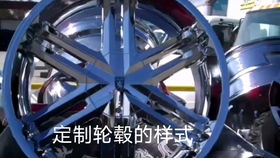Understanding Omni Wheels: A Comprehensive Guide

Omni wheels, also known as 90-degree omni wheels, have become a popular choice for various applications, from service robots to hand trucks. These innovative wheels offer a unique combination of features that make them versatile and highly efficient. Let’s dive into the details of omni wheels and explore their various aspects.
What Are Omni Wheels?

Omni wheels are a type of wheel that allows for 360-degree movement in any direction. Unlike traditional wheels that can only move forward, backward, or turn, omni wheels enable smooth and precise movement in all directions. This makes them ideal for applications that require high maneuverability and agility.
Design and Construction

Omni wheels are typically made up of a central hub, a set of rollers, and a frame. The hub is usually made of aluminum or plastic, providing a lightweight yet durable structure. The rollers are the key components of omni wheels, as they allow for the 360-degree movement. These rollers are often made of polyurethane, a material that offers excellent shock absorption and durability.
Here’s a breakdown of the components:
| Component | Description |
|---|---|
| Hub | The central part of the omni wheel that connects the rollers to the frame. |
| Rollers | Small, round components that allow for 360-degree movement. |
| Frame | The outer structure that holds the hub and rollers together. |
Advantages of Omni Wheels
Omni wheels offer several advantages over traditional wheels, making them a preferred choice for many applications:
- 360-Degree Movement: Omni wheels allow for smooth and precise movement in any direction, providing unparalleled maneuverability.
- Reduced Friction: The design of omni wheels reduces friction, resulting in smoother and quieter operation.
- Increased Durability: The materials used in omni wheels, such as polyurethane and aluminum, ensure long-lasting performance.
- Customization: Omni wheels can be customized to fit various applications, including different sizes, load capacities, and mounting options.
Applications of Omni Wheels
Omni wheels are used in a wide range of applications, including:
- Service Robots: Omni wheels enable robots to navigate complex environments with ease.
- Hand Trucks: Omni wheels provide smooth and efficient movement for hand trucks, making them ideal for transporting heavy loads.
- Transfer Conveyors: Omni wheels are used in transfer conveyors to facilitate smooth and precise movement of goods.
- Luggage Carriers: Omni wheels make luggage carriers more maneuverable and easier to push or pull.
Choosing the Right Omni Wheel
When selecting an omni wheel, it’s essential to consider several factors to ensure it meets your specific needs:
- Size: The size of the omni wheel should be appropriate for the application, considering factors such as the weight of the load and the space available.
- Load Capacity: Ensure the omni wheel can handle the weight of the load you plan to transport.
- Material: The material of the omni wheel should be suitable for the environment in which it will be used, considering factors such as temperature, humidity, and exposure to chemicals.
- Mounting Options: The omni wheel should have mounting options that are compatible with your application.
Conclusion
Omni wheels are a versatile and efficient choice for various applications that require high maneuverability and precision. By understanding the design, construction, and advantages of omni wheels, you can make an informed decision when selecting the right wheel for your needs.


